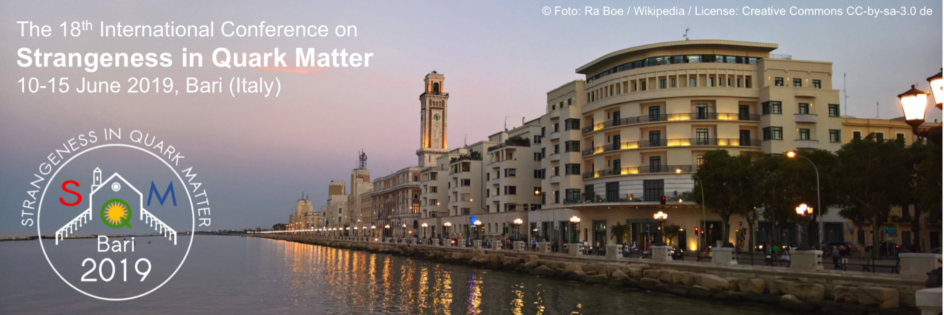Speaker
Description
The hadronization process of heavy hadrons with bottom and charm quarks, especially for baryons $\Lambda_c$ and $\Lambda_b$, in a dense QGP medium is largely not understood.
We present predictions obtained with a coalescence plus fragmentation model, for $D^0$, $D_s$, $\Lambda_c$, B and $\Lambda_b$ spectra, the related baryon to meson ratios and the $D_s/D^0$ ratio, both at RHIC and LHC energies in a wide range of transverse momentum region up to 10 GeV.
We discuss the effects of the hadronization process and how it plays a fundamental role to describe simultaneously the experimental data for the nuclear suppression factor $R_{AA}$ and the elliptic flow $v_2(p_T)$ from RHIC to LHC energies.
We point out that also the nuclear modification factor for D meson is strongly modified by $\Lambda_c$ production, explaining the $R_{AA}(p_T)<1$ observed by STAR at low momenta and also present first prediction about the $R_{AA}$ for $\Lambda_c$ at LHC energy that should be greatly enhanced at variance with all the other light hadrons.
We will discuss how our model can naturally predict values of the order of $O(1)$ for $\Lambda_c/D^0$ as recently measured at both RHIC and LHC, and we present the novel predictions for $\Lambda_b/B$ not yet measured, which are much larger than the expectations from fragmentation.
Moreover assuming that at the LHC top energies there can be the formation of QGP, we show that in the same scheme due to considerable volume effect a still large $\Lambda_c/D^0 \approx 0.5$ is predicted as seen by ALICE in $pp$ collisions
[1] S. Plumari, V. Minissale, S.K. Das, G. Coci and V. Greco, Eur.Phys.J. C 78 (2018) no.4, 348
[2] V. Minissale, F. Scardina, and V. Greco, Phys. Rev. C 92, 054904 (2015)
[3] F. Scardina, S. K. Das, V. Minissale, S. Plumari, V. Greco, Phys.Rev. C 96 (2017) no.4, 044905
[4] STAR Collaboration, Nucl.Phys. A 967 (2017) 620-623
[5] ALICE collaboration, JHEP 1804 (2018) 108
| Track | Hadronisation and coalescence |
|---|
